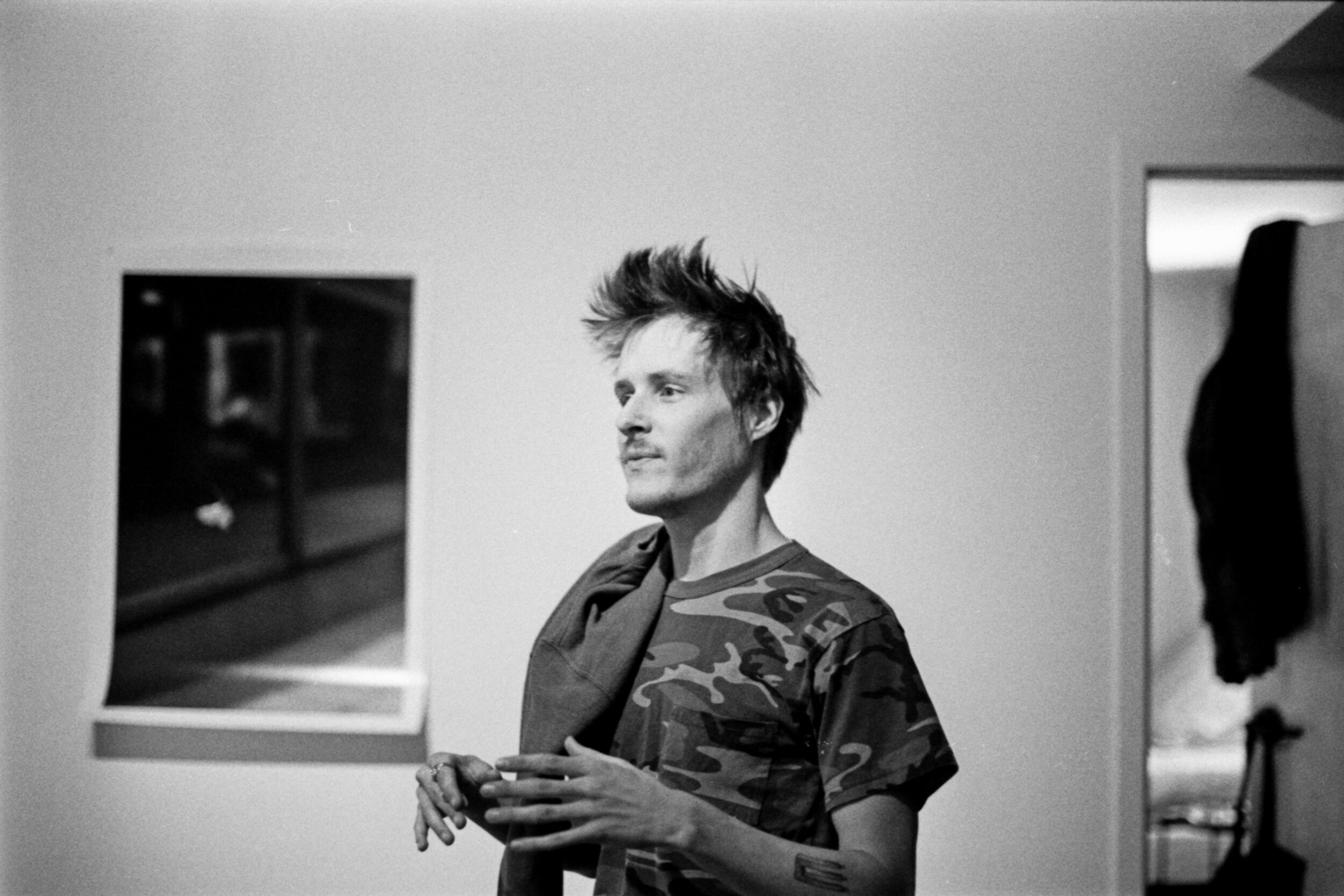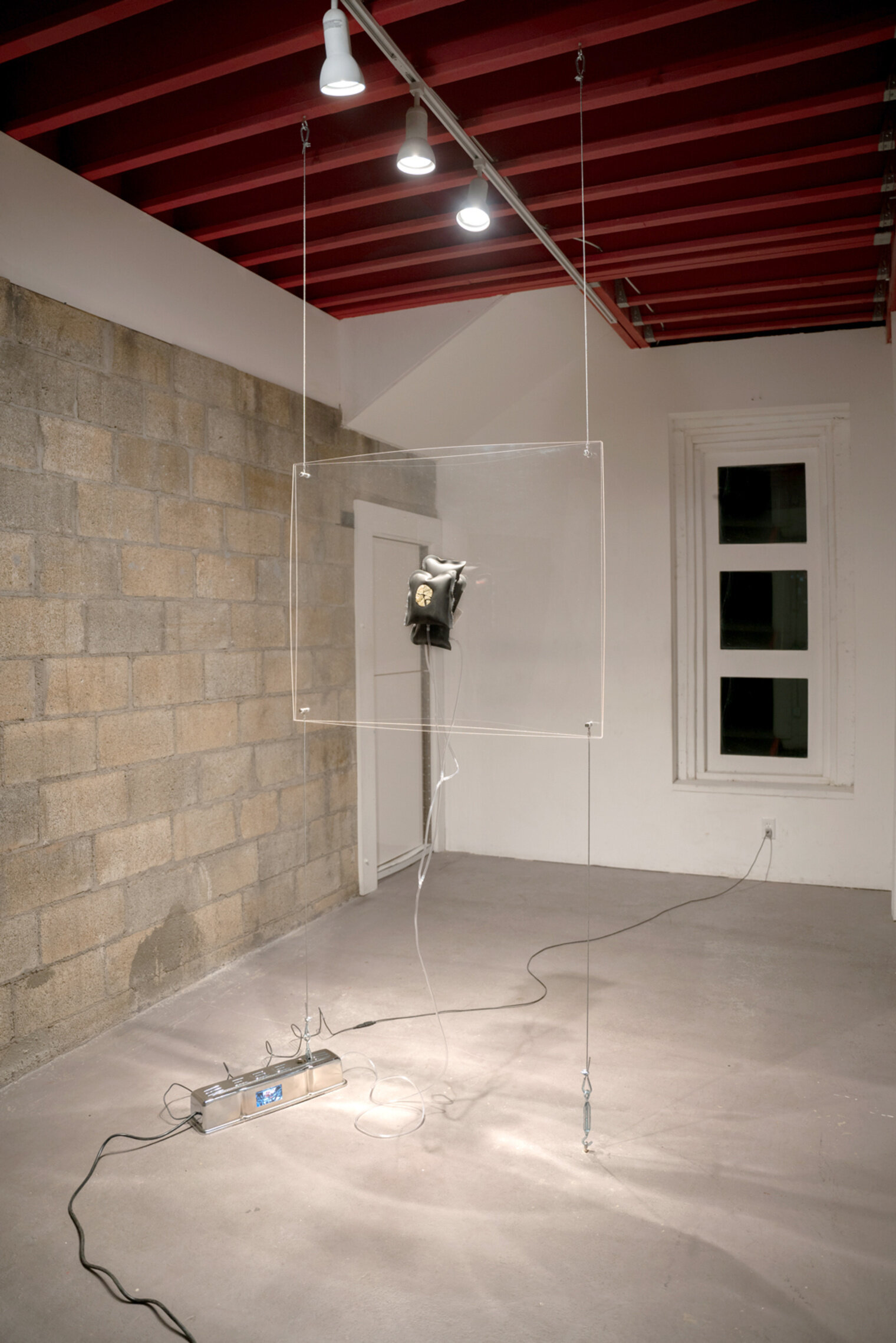Bradley in his studio at Stove Works. Photo: William Johnson, wmjohnsonphotography.com
Saria: How did you find out about Stove Works?
Bradley: I heard about Stove Works through some art friends in Nashville initially and then learned more about it through Mike Calway-Fagan. I came to a Stove Works’ show before they were in their current building and I spoke with Mike and he asked if I would give an artist talk that night, and I said, “No, I can't do that.” I had driven from Nashville for the day and he was like, “Okay. You'll do the next one.” So, I came back down for the Slideshow nights and I gave a talk and that sparked some studio visits.
Saria: Did you always feel like an artist?
Bradley: I would say no, I was actually reluctant to use that term for a long time, even when I was making art photography. I think I didn't have enough of a bearing on what that term would change about what I do. So, I called myself a photographer, and I was also trying to avoid some kind of pretension that I felt would come across if I claimed an artist with a capital “A.” Once I went to grad school I felt like I had to since I was getting my masters in Fine Arts.
Saria: When did you move from straightforward photography to the art you're making now?
Bradley: I initially started experimenting with video in grad school and that opened the floodgates of other potentials. Once you start to mess with 4D art, it breaks a seal. I got interested in how I can project video and different ideas around what our relationship to images are. I'm still interested in externalizing these images that were never deemed worthy of holding an objecthood.
Quarter Lever, 2019-2020, silver gelatin photograph authored by artist's paternal grandfather, epoxied potato chip, air wedges, pvc tubing and connectors, acrylic, aftermarket valve cover for 1957 Chevrolet, screen (HD video 01:27" looped, no audio), electromechanics, machined hardware, turnbuckles, miscellaneous hardware, miscellaneous wiring and cordage, various epoxy and adhesive, dimensions variable
Saria: Your website doesn't include a bio or artist statements for the artwork, why is that?
Bradley: Websites are weird in that sense because they're so often seen as being made strictly for an audience, it's very commodified in that sense so I hate thinking about it in that way. I want it to still be interesting for me and part of that is withholding some information. I'm easy to get in touch with, my email is on there and I'm willing to chat more. There's something about presenting art in a manner where it has some kind of quality that is not fully defined.
Saria: How would you describe your art style?
Bradley: I’m apprehensive to that term because of the way it is used to create genres in art and usually I think we tend to think about how our style is by someone telling us so I end up thinking about how other people have labeled what I do. There's definitely a movement of people making sculptural photographic works right now, but if I realize that I'm creating a style it's often in my best interest to break that.
Saria: Why do you choose to not include artist statements on your works as they are presented on your website?
Bradley: What I make has lots of context involved. They are conveyed in certain ways on my website that don't require any sort of institutional artist statement, which was definitely crammed down my throat from grad school. On my website, I think engaging in an explanation of how things work also with a materials list becomes more telling. Reading that to me creates a more rich space around the work. It provides most of the context for the viewer to create a narrative on their own. I have an artist statement for most of those works if I need to provide that context and that framework.
Saria: What do you find most intriguing about sculpture?
Bradley: Sculpture is most interesting because everything can be sculpture, it's much more about a heterogenous relationship between materials and finding these links between how two materials relate to each other to create meaning. It can create a kind of awareness to consumption recycling and waste and excess but also to things like labor and bureaucracy and politics and identity can coalesce through. Conversation is as simple as tracing the lineage of how one thing is made.
Console, Console (Diptych), 2020, Parametric speakers, speaker wire, proprietary amplifier, two-channel audio, OLED screens with micro controllers, three-channel bitmap animation, custom code, various adhesives and hardware
Saria: What enforces your choice to use certain materials?
Bradley: I use memory in my work a lot, so misremembering. How things may appear visually and not actually be so, kind of like magic, it's more about the sleight of hand, it's like an illusion through a kind of decoy. My relationship to materials shifts between the demand of a project and the ideas and the materials can be iterative, leading to another. Research rigor comes into play and reading about certain historical events. And also thinking about the materials that exist around imagery. My piece Quarter Lever especially is thinking about the way that images are presented at eye level especially on storefronts, and there is a video low on the ground which is dealing with the fact that video is clearly the most interesting thing you'd want to see and it only about 3 inches wide and above is a huge device used for showing imagery, but it just has these small pieces being smashed at eye level. So, I'm kinda playing with those contrasting feelings, the way that we feel about something that is factory produced and has been processed and things that are more raw and have more warmth to them.
Saria: Your work, An Imperfect Offering, A Windowless Room (Skeeeedaddle!), creates this sort of dreamy, disconnected space while using a can and pencil to mount it to the wall seemingly with magic. What inspired you to make this piece?
Bradley: Sally O'Reilly talks about a certain type of art that exists at the "edge of the credible." The way that piece is functioning, there are some things that have a kind of anti-logic. That piece is about someone very special to me dying of dementia and so watching how memory starts to behave illogically and unexpectedly, it's interesting because someone's memory is different from what people say and whether or not they remember you. That was one of the major ideas going into that work and an influence about it. But It allows for inference too.
An Imperfect Offering, A Windowless Room (Skeeeedaddle!), 2021, Hand-cut MDF, inkjet print, steel, wax, tin can, pencil with lead replaced with steel, hardware and adhesives, 36.5"x26"x8"
Saria: Do you strive for perfection in your work?
Bradley: I do really like to strive for it but my work also thrives on the failures that happen, that are ultimately going to happen.
Saria: What's your most personal piece?
Bradley: An imperfect offering is my most personal because it's about that process of letting things go and settling for those imperfections of trying to represent them. I know that my sentiments and my attachment to the work I make is never going to be felt by someone else and can't. I use personal experience as a way to attempt to get to collective experiences. Creating shared empathy over an artwork. That piece has the most earnestly behind it.
Saria: What is the best thing that this opportunity at Stove Works did for you as an artist during this residency?
Bradley: Two things: meeting new amazing artists and time, space, and access to tools and equipment is very crucial. With that comes making relationships with people who know how to use those tools better than me and learning from them.
Saria: What are you planning to do after you leave Stove Works?
Bradley: I don't know, looking for that first warm day of summer, maybe find a pool or swimming hole, that's all I have on the horizon.
About Bradley:
Bradley Marshall is an artist in residence here at Stove Works till the end of March. He received his masters at East Tennessee University and along with art making teaches photography Bradley is interested in sculpture that incorporates often photography and video and different ways of creating a narrative through artworks inspired by personal events in his life. After sitting down with him I've come to recognize that his work is very thoughtful and aims to allow space for the viewer to project their own understanding onto his work. He pulls from life experiences to create an object or collaborate objects that play with how we view objects and memory. He has a piece currently on view in our show Teachable Moment titled Console, Console (Diptych).
ABOUT ME, THE INTERVIEWER
My name is Saria Smith, and I am a BFA Student currently working as the Curatorial Assistant at Stove Works Gallery. I am an artist and find joy in expressing myself through various ways involving, working with found objects, collage, and music. I decided to start these artist interviews as a way for the public to connect more with the residents who flow through Stove Works perhaps unseen, especially during this pandemic.




